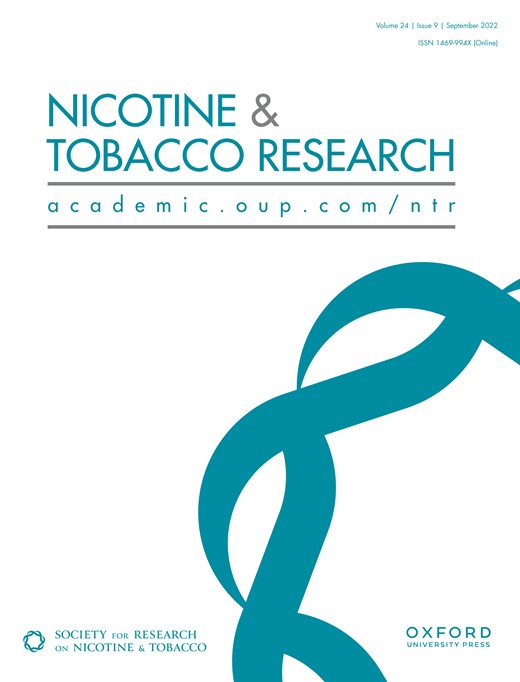-
Views
-
Cite
Cite
Chelsea L Fitzpatrick, Hyoun S Kim, Christopher R Sears, Daniel S McGrath, Attentional Bias in Non–Smoking Electronic Cigarette Users: An Eye-Tracking Study, Nicotine & Tobacco Research, Volume 24, Issue 9, September 2022, Pages 1439–1447, https://doi.org/10.1093/ntr/ntac112
Close - Share Icon Share
Abstract
This study examined attentional bias (AB) to e-cigarette cues among a sample of non–smoking daily e-cigarette users (n = 27), non–smoking occasional e-cigarette users (n = 32), and control participants (n = 61) who did not smoke or use e-cigarettes. The possibility that e-cigarette users develop a transference of cues to traditional cigarettes was also examined.
AB was assessed using a free-viewing eye-gaze tracking methodology, in which participants viewed 180 pairs of images for 4 seconds (e-cigarette and neutral image, e-cigarette and smoking image, smoking and neutral image).
Daily and occasional e-cigarette users attended to pairs of e-cigarette and neutral images equally, whereas non–users attended to neutral images significantly more than e-cigarette images. All three groups attended to e-cigarette images significantly more than smoking images, with significantly larger biases for e-cigarette users. There were no between-group differences in attention to pairs of smoking and neutral images. A moderation analysis indicated that for occasional users but not daily users, years of vaping reduced the bias toward neutral images over smoking images.
Taken together, the results indicate that the e-cigarette users exhibit heightened attention to e-cigarettes relative to non–users, which may have implications as to how they react to e-cigarette cues in real-world settings. AB for e-cigarettes did not transfer to traditional cigarette cues, which indicates that further research is required to identify the mechanisms involved in the migration of e-cigarettes to traditional cigarettes.
This study is the first attempt to examine attentional biases for e-cigarette cues among non–smoking current e-cigarette users using eye-gaze tracking. The results contribute to the growing literature on the correlates of problematic e-cigarette use and indicate that daily and occasional e-cigarette use is associated with attentional biases for e-cigarettes. The existence of attentional biases in e-cigarette users may help to explain the high rate of failure to quit e-cigarettes and provides support for the utility of attentional bias modification in the treatment of problematic e-cigarette use.






Comments